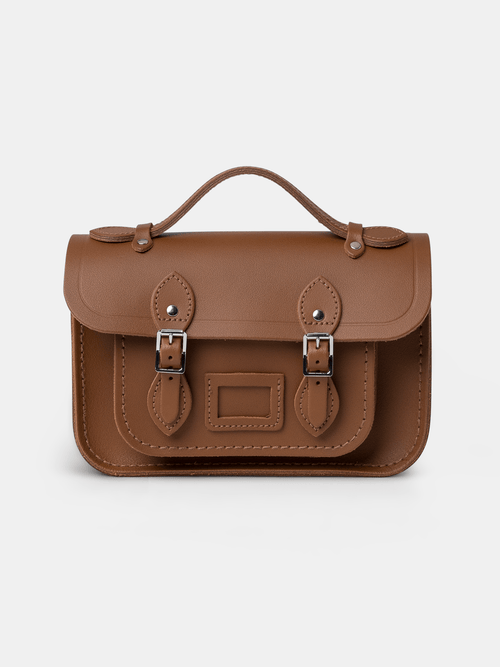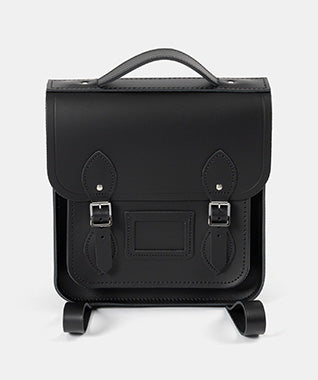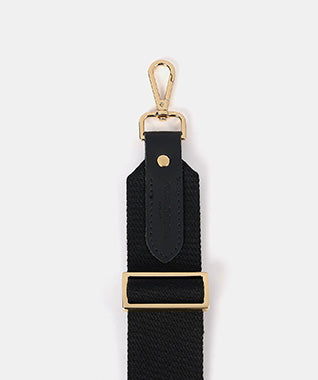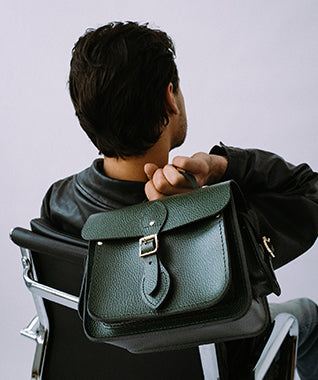The Journal
A Highland Fling Stories
For our Autumn/Winter 2023 collection, ‘A Highland Fling’, we wanted to tell the stories of real people that had a true collection to the Highlands. We reached out to Rosanna, Arran and Dani, each ...

For our Autumn/Winter 2023 collection, ‘A Highland Fling’, we wanted to tell the stories of real people that had a true collection to the Highlands. We reached out to Rosanna, Arran and Dani, each of whom has their own connection to Scotland, which has played a huge role in their development.
Our producer, Galih Richardson, assistant director Bayu Satria and director of photography Maynard Sabellano interview each of them to find out how Scotland inspires their craft.
ROSANNA
CS
Hey Rosanna. Please could you introduce yourself?
Rosanna
Of course. My name is Rosanna Lindsey, and I'm from Leicester originally. I'm a professional dancer in ballet and contemporary dance. My preferred style is more neoclassical, or modern ballet, which is a combination of classical ballet with the more modern contemporary aesthetic. It's not just based on that classical aesthetic of balletic lines; there's also that modern movement and fluidity in there as well. I like the freedom of the combination of the two styles together.
Nowadays, I perform and rehearse around London, where I’m based, most of the time.
CS
Were you classically trained in traditional ballet?
Rosanna
Yes, I trained in ballet and contemporary; the school I went to was a 50/50 mix of the two. We'd rehearse with various different choreographers - some were more trained in ballet, some more contemporary - so we got a good mix of different styles, and after the training, we came out a lot more versatile as dancers.
CS
And who did you work with professionally, as a dancer?
Rosanna
I've worked with Ballet Black, the company, and through them we’ve worked with various different choreographers. That includes Mthuthuzeli November, who’s also more of a neoclassical choreographer, and Cassa Pancho, who's the director of the company.
We toured around England and Scotland, which I liked more than being in the studio rehearsing, because I quite like the change of environment. In the studio, it can be quite monotone and repetitive, always doing the same thing, because we need a lot of months of training and going through the creation period to refine the movements. It can get a bit tedious, but I really liked the performing aspects of it; it's more exciting for me.
CS
Talk to me about the performance aspect of it. What do you enjoy about that?
Rosanna
When I'm on stage, I have to almost shut off from my surroundings and the audience to enable myself to let my body do the talking. The choreography we learn becomes muscle memory, so you don't have to focus too much on that. When I do start to think too much about what move is coming next, I sometimes start to forget what my body is actually doing.
So, for me to perform to my best ability, it’s important for me to shut off from the thoughts and just be free. I think that's why I like performing so much. There's a freedom in it being on stage and just letting go.
CS
Could you talk about your process in merging classical ballet with modern contemporary, and how that makes you feel?
Rosanna
Ballet, for me personally, can be quite restrictive as a style because there's the traditional aspect of it with the first, second, third positions, and so on; you're restricted to that vocabulary of movement. Contemporary is all sorts of different things. You can be on the floor, it can be hip hop, it can be moving around the room in whatever fashion you want, improvising. So I think adding that vocabulary of ballet into contemporary means there's more freedom in it. That’s the main aspect that I enjoy in dance - the freedom - rather than being stuck with certain aesthetics and traditional values and styles.
ARRAN
CS
Hi Arran, please could you introduce yourself?
Arran
I’m Arran Rahimian and I am a visual artist.
CS
Tell me a little bit about your artwork, your process and what it means to you.
Arran
As an artist, I'm really interested in documenting time, so that could be me being outside with nature, and exposing myself to the natural elements, or allowing my work to be one with nature by physically allowing it to compose a piece, or stepping back and viewing time, visually; being in time with the work as well.
CS
What is it about time that makes it so dear to you?
Arran
To me, time is a massive topic and a massive theme. It's the unpredictability of what happens within a moment of time, whether it's a quick snap of time, or a two-hour, three-hour longer period of time. These durations of time will impact different works visually.
CS
How do Edinburgh, the Highlands and nature in general affect your work?
Arran
The natural colours of nature play a huge part in the palette that I work with as an artist. With heather, for example, I might be playing around with more of an autumnal palette, but if I'm near the sea, I'll be working with more natural colours like blue, or primitive colours.
CS
Can you talk me through one of your pieces?
Arran
I recently did a piece up in the Pentlands documenting time by suspending a natural object, a piece of heather, from rope and allowing the wind to dictate the movement, depending on the wind power that creates these gestural movements. It’s about exploring mark making in an unpredictable way, through looking at time and exposing it to the natural elements. It’s a landscape painting made by the landscape itself.
CS
Tell me about how you got into making art. How did it begin for you? What's your first memory of it?
Arran
The first time I remember making art was being a kid, maybe five or six years old, and just being loose, being able to have that freedom of making. That freedom of making is so important, and it's something that I've really wanted to bring back into the work that I make now. I think we become so tight as humans, especially when we're in our teens, so actually, for me, the challenge was breaking into that looseness again, and as an artist that’s something that I'm trying to do my work just now.
CS
Do you feel like your current work has broken you out of that looseness?
Arran
Yes, I think the work that I'm making just now is really breaking me into that looseness that I'm talking about, especially in my most recent work. By removing myself from the work, I'm allowing something else to compose, something else to happen over time. That's loosening me because I'm not part of that process, but I'm viewing that process.
DANI
CS
Hey, Dani. Could you please introduce yourself?
Dani
Hey, I'm Dani Hair and I am a motorcycle enthusiast.
CS
What got you into motorcycling? What was the main influence?
Dani
So I started riding about six years ago. I was in Australia at the time, and it was basically just the easiest way to get around in order to get to the beach, in order to park, etc. It was really just a convenience thing at first. So, I got my licence, and I did a bit of writing in Australia for about a year before moving to Scotland. My father lives in Scotland, and I was born here, so I always felt like I wanted to go back at some point in my life. Now that I had my licence, I thought it would be a really good time to go travelling, move somewhere else and really get to explore another country on the bike. So I moved to Scotland.
CS
What's special about riding in Scotland?
Dani
People are usually a bit intimidated by riding in Scotland because of the weather, of course, but it actually has one of the most beautiful landscapes for riding. It's just got such diverse environments. You’ve got big mountains, lochs, and really twisty windy roads with lots of different elevations. Once you get past the initial fear of the weather conditions, it's actually amazing. If you have the right gear and you have the right bike, it doesn't really matter.
CS
Tell me about your work.
Dani
I currently work as a colour trim and graphic artist for a brand called Royal Enfield. It's one of the oldest motorcycle brands in the world. Basically, I design the colour scheme, the seat trim, the grips, I do the decals… basically anything that involves the aesthetics of the motorcycle.
CS
Tell me about your bike.
Dani
At the moment, I'm writing a Continental GT 650, a Royal Enfield bike. It’s an expedition special, so it's a special colourway, and it's a bit of a ‘café racer’ riding position. It’s just a beautiful bike. It's really fun to ride, and Royal Enfields are great, especially in Scotland and the Highlands, as they’re so light.
CS
Tell me more about riding. What does riding feel like to you?
Dani
Riding to me is like an escape. It makes travelling about the journey rather than just the destination, because you're just in the moment. You have to have complete focus on what you're doing, so it's almost like a form of mindfulness. It's just you and the machine, and the environment around you. It's just a really relaxing experience. Even if you can feel all the elements it just gives me a lot of peace, just blocking out everything else that I’m doing and blocking out everything that's going on in my mind. It’s also the best way to experience different places, because you really get to see everything. You're not distracted by anything else.
CS
Talk to me about your motorcycling community.
Dani
When I first moved to Scotland, I didn't know anyone. I moved to Edinburgh, and the main way that I was able to make friends was through motorcycles. There are a lot of people that ride in Edinburgh; you just have to know where to find them. By going to a lot of different bike meets ad bike shows, you end up meeting people who enjoy the same thing - especially a lot of other women who ride. I think that it took a little longer to find that community, but once we did find each other, we stuck together. You end up going on vacations with them, you end up touring with them, so you really get to know them really fast.
Motorcycling is inherently dangerous, so there's always an element of wanting to make sure that everyone is safe, and so riding as a group is a really fun thing to do. Everyone's always looking out for each other, making sure that everyone's bike is maintained, and everyone is riding to their abilities. The community in Edinburgh is a really strong one. I think it’s also because a lot of people live in tenements and don't have their own garage, so you end up parking your bike in communal spaces with other riders, so that’s a really cool way of meeting other people. You end up meeting other people in bike businesses, whether they're mechanics or have their own touring businesses; there's a lot of that in Scotland.
Thank you to Rosanna, Arran and Dani for being a part of this campaign. It was fantastic to learn about your stories.
Discover more about A Highland Fling here.
















































